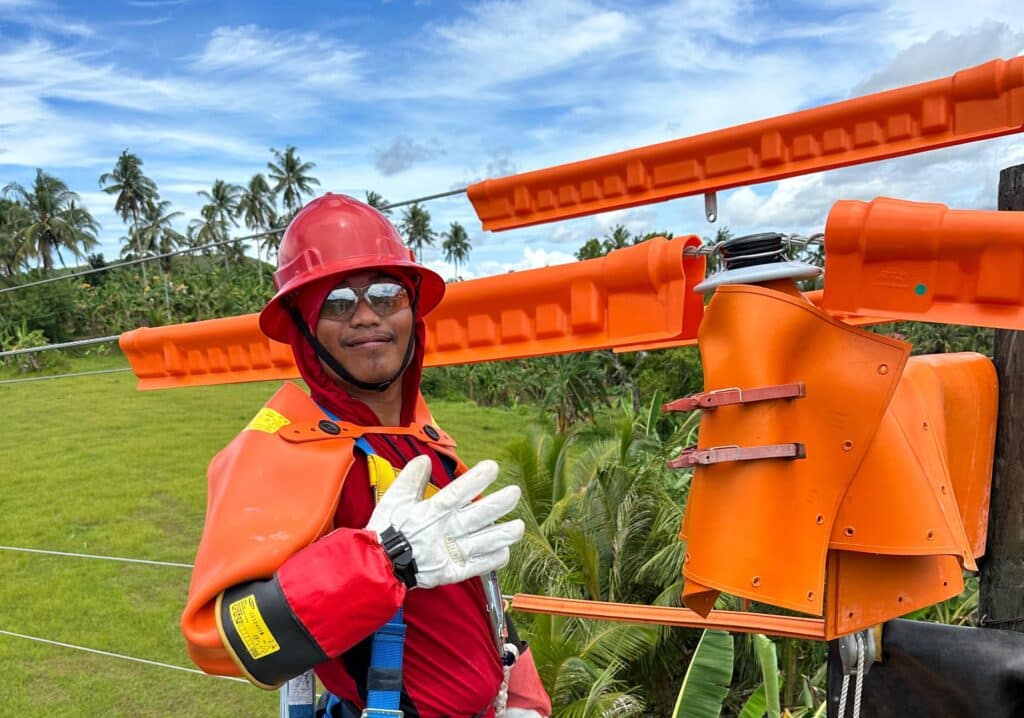Live Line maintenance is an essential activity in the electricity sector, which always requires a good case analysis before any action is taken. Each intervention on distribution networks and transmission lines requires carefully selected Live Line equipment and tools to guarantee worker safety and operational efficiency. Therefore, the correct choice of items depends directly on the quantity and quality of information available on the system and services to be applied.

In short, the more detailed the information available, the more accurate the list of tools and the more successful the activities will be. This level of customization not only reduces the risk of purchasing unnecessary items, but also promotes the safety and efficiency of operations, increasing productivity and minimizing the chance of errors.
We will explore how a personalized and detailed approach adds value and offers a more assertive solution for our clients’ maintenance.
The Choice of Live Line Tools
Below, we consider the main items to ensure a precise and appropriate choice of equipment:
- Voltage Level: This directly affects equipment models due to the insulation class. In some cases, even mechanical resistance (traction) can be affected.
- Lifting and positioning equipment: If the client does not determine the equipment, preliminary factors need to be considered. Some of these factors are: the number of professionals, models of supports or structures and ground conditions.
- Modules and Working Methods: Defining the strategy of the work and in which system it should be done, helps to choose the working material. Although some are common, each approach has its own particularities.
- Tasks performed: The nature of the tasks directly influences the execution strategy and, consequently, the choice of Live Line tools in their parameters and sizing.
- Type of Structure: The type of structure in which the work will be carried out determines which items will be most suitable for execution. Different structures have particularities that impact on the selection.
- Insulator characteristics: The model, arrangement and pitch of the insulators are some of the important factors in the quantity and sizing of the handling equipment.
- Conductor characteristics: Factors such as cable gauge, number of conductors per phase, cable-to-ground height and span size guide the level of customization and equipment sizing.
In addition to the items that are already standardized and widely used, it is important to note that in some cases it may be necessary to customize the product, adjusting dimensions, designs or even creating new implements to meet specific demands.
Go to the link and see an example of a CTST Tools List using the categories presented above.
Live Line Methodology and Materials and Equipment Technologies
But it’s not enough to have the right tools; it’s essential that professionals have a thorough understanding of working methodologies and material technologies. It is therefore essential that companies invest in comprehensive training for their teams, covering everything from safe working methodologies to the latest materials and equipment technologies. This knowledge is fundamental for companies:
- Establish clear purchasing criteria: By knowing the specifics of the activities, the customer can make informed decisions.
- Avoid low-quality products: Technical knowledge reduces the chance of buying products that don’t meet your needs or safety and quality standards.
- Choose the right equipment for each situation: Understanding the application of equipment helps you make more assertive choices.
- Take care and manage correctly: The cleanliness and organization of Live Line tools is an essential factor for successful operations.
This education process is extremely important for the company, because informed people have the power to make better and safer decisions.
Watch this excerpt from the Live Line Methodology course on the subject:
Once the equipment has been purchased, post-purchase training or technical delivery becomes a very valuable stage. After all, training allows linemen and technicians to understand the practical application of each piece of equipment in their daily activities, ensuring that they know how to use it safely and efficiently. It is crucial that employees know how Live Line tools work, how to handle them properly and how to maintain them.
In addition, after-sales consultancy is invaluable for monitoring the use of the equipment, clarifying doubts and providing guidance on how to solve any challenges. This continuous monitoring certainly helps companies to maximize their investment, making the most of the products purchased and promoting safe and effective operation.

Full CTST experience
In short, our experience in the electricity sector shows us that choosing the right tools for Live Line maintenance and continuously training staff are essential for safety and operational efficiency. CTST works side by side with you, offering everything from initial diagnosis to post-training assistance.
If you would like to know more about our solutions in training, consultancy and specialized technical support, please contact us for a personalized assessment of your needs.
Check out more of our technical articles!

